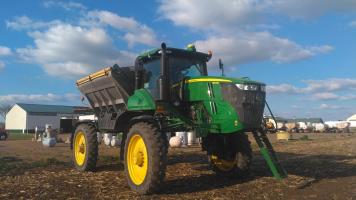SIDE DRESS SOON TO IMPROVE NITROGEN AVAILABILITY
May 21, 2021

Young corn plants quickly sense the amount of nitrogen (N) available for their nutrient needs and they respond accordingly.
If the crop senses limited amounts of N, the corn plant will reduce the number of kernel rows it produces on each ear. According to Kevin Carlson, Federated’s agronomy sales manager, by about V5, the corn has decided how many kernel rows to set.
Side dressing N makes the difference.
“There are corn acres out there that don’t have nearly enough N early on,” said Carlson, “including my own,” he added with a chuckle, acknowledging the need to side dress his own fields.
Side dressing urea should occur in the V4 to V6 time frame. The actual timing is “driven by the environment and moisture,” said Carlson. Moisture spurs nutrient loss as N is converted to nitrate and leaches out, or as N is lost through volatilization.
2019 was a tough year for N management; everyone had to work hard to get in the split applications and N loss was extremely high because of excessive moisture. But 2020 has started out well weather-wise, and split applications are still very possible, assuming the weather cooperates. Because we can’t predict the weather, splitting N applications is “insurance against the weather,” said Carlson.
“We recommend at least 50 lbs./ac. of N so crops don’t suffer,” said Carlson. That’s 100 lbs./ac. of urea, for example, in a side dress application.
Every side dress application should include a nitrogen stabilizer, such as Factor®, to eliminate volatilization.
Managing N through split applications by side dressing is “a win-win, agronomically, environmentally, and economically,” Carlson said. Get the N applied soon. Talk to your Federated Agronomist.